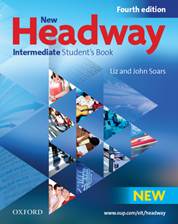ELT Publishers are creating more and more digital content, which some would agree is a positive step for language teaching. However these useful additional resources and the terms used to describe them are going above the heads of many who simply don’t understand the products or their functions. This is made even more problematic by publishers naming very similar resources differently.
For this reason, we at BEBC decided to get definitions from publishers to accompany the types of digital resources on offer so that we might share them with you. You may wish to save this page to your favourites or print it off as a reminder to help you when making your next purchases…
A
ActiveBook (Pearson) – a digital student book with full audio, suitable for any computer. Used just as a book in class, and outside the classroom it gives access to Student Book pages and audio so that students can practise activities taught in class.
ActiveTeach (Pearson) – for use with a computer and projector or with an Interactive Whiteboard. Includes Student’s Book pages, full class audio and DVD, printable worksheets and interactive exercises, assessment activities and tests and Interactive Whiteboard tools.
App (Cambridge University Press and others) – software for consumer mobile devices like mobile phones, tablet computers and media players.
B
Blended course (Cambridge University Press) – a teacher-led course containing a self-study portion accessed by the learner over the internet.
Blended Learning (Macmillan and others) – a method of learning which uses a combination of different resources, especially a mixture of classroom sessions and online learning materials.
C
Class Presentation Tools (Macmillan) – tools for classroom presentation. This Interactive Whiteboard Software offers a digital version of the Student’s Book on screen with integrated audio, video, games and customisable Teacher’s pages e.g. New Inside Out / Global.
Classware (Cambridge University Press) – computer software that lets you present digital versions of Cambridge textbooks on an Interactive Whiteboard or projector, to engage the whole class.
D
Digital book (Richmond) – complete digital version of all components usually delivered on CD-ROM and compatible with any Interactive Whiteboard.
E
E-storycards (Richmond) – electronic version of storycards for display on interactive whiteboards.
eBooks (Cambridge University Press and others) – reading materials in digital form, requiring a computer, mobile device or e-reader to display the text.
ELT Advantage (National Geographic Learning/ Cengage Learning) – online professional development courses, workshops, and virtual seminars that help teachers increase their expertise in English language instruction. Free demos at http://elt.heinle.com/eltadvantage.
ExamView (National Geographic Learning/ Cengage Learning) – comes with Assessment CD-ROMs and is available with most Heinle programs. The testgenerating software allows teachers to create and customise tests, manage classes and assignments, retrieve results from online tests, and generate detailed and flexible reports.
F
Footprint Reading Library (National Geographic Learning/ Cengage Learning) – a collection of online ebooks (readers) typically accompanied by audio, record and playback functionality for pronunciation practice, video clip and interactive quiz. Free demos at http://elt.heinle.com/ng.
G
Global eWorkbook (Macmillan) – an evolution of self-study materials, providing a wide range of resources including: listening and video materials, with video content from the BBC Worldwide archive, which can be viewed on a computer or downloaded to portable devices for mobile learning, grammar, language practice, reference materials, useful language sections and model conversations.
H
I
iTools (Oxford University Press) – digital resources for a range of Oxford University Press courses, giving teachers material for use on the Interactive Whiteboard and bringing learning alive in class (iPacks – first generation of Interactive Whiteboard software available for the New English File course).
iTutor (Oxford University Press) – a new interactive self-study DVD-ROM, included with some OUP courses (in the Student’s Book). Gives learners interactive material from the book, grammar revision and practice, skills practice and vocabulary lists with example sentences and pronunciation.
iWriter (Oxford University Press) – available on the Oxford Advanced Learner’s Dictionary CD-ROM. Guides students through the stages of planning, writing and reviewing a range of different written tasks. Task types include essays, presentations, reports, letters, reviews, CVs and more.
J
K
L
LMS (Learning Management System) (Oxford University Press) – a platform that allows teachers to assign exercises to their students, track their progress and see their marks. LMS is now available with all courses that have online workbooks, online skills practice as well as online practice tests and online placement test.
Learning Platform (Richmond) – Portal + Virtual Learning Environment + Test Studio.
Learning Resources Bank (Oxford University Press) – Student’s Website.
M
Macmillan English Campus (Macmillan) – an English language learning platform that offers a complete solution for blended learning. Combining a database of over 4,300 interactive resources with a range of learning management tool, Macmillan English Campus gives teachers full control of the resources and monitors students’ progress.
Macmillan Practice Online (Macmillan) – an easy, cost-effective way to offer your students the advantages of online learning. With a range of over 80 online courses to choose from, each designed to support classroom teaching and including 100-200 resources, you can choose the one that suits your needs.
Macmillan Webinars (Macmillan) – the Macmillan Webinars are a series of live talks, broadcast over the internet to teachers worldwide. Free to access and viewable from any computer with an internet connection, teachers have the opportunity to watch the talks and put questions directly to Macmillan authors http://www.macmillanenglish.com/webinars. No microphone is necessary as questions can be typed to webinar hosts.
mimio® software(Cambridge University Press and others) – MIMIO is a portable device which can be attached to a whiteboard, wall etc, via a projector, which provides similar functionality to a smart board. You can see more about them at the website- http://www.mimio.dymo.com/.
MyELT (National Geographic Learning/ Cengage Learning) – an internet based learning management system designed for English language teachers and students. Instructors use MyELT to assign Heinle online learning content, track student progress reports, and more. Students use MyELT to complete the online activities, monitor their own learning progress, and review as necessary.
MyEnglishLabs (Pearson) – provides interactive activities and online tools which give students tips, automatic feedback and instant grades. A grade book and diagnostic tools reveal to teachers how students are progressing. Teachers are able to assign activities to groups of students with different needs.
N
O
Online exam practice tests (Oxford University Press) – online practice tests for: KET, PET, FCE, CAE, IELTS, TOEIC®, TOEFL iBT™ and national exams. Teachers can assign online practice tests with help including instant feedback on answers, exam tips and an integrated dictionary, or without help as a mock exam. Saves time with automatic marking. Easily identifies areas of weakness to focus on in class.
Online Placement Test (Oxford University Press) – a Placement Test that helps teachers find their students’ level of English online. Saves time with automatic marking and then places students in the right class based on their scores (CEFR level, score out of 120, time taken and more…)
- Online
- Automatically marked
- Instant results
- Variety of scores (CEFR level and more)
Online Practice for Students (My…) (National Geographic Learning/Cengage Learning) – access to online practice is usually included the student’s book of a series e.g. Outcomes or Practical Grammar. It allows students to study online at their own pace or do the work their teacher set for them. All activities are automatically graded so that both students and teachers can monitor progress. N.B. Online practice with the Outcomes course is called ‘MyOutcomes,’ and online practice for Practical Grammar course is called ‘MyPG’ and so on…
Online Skills Practice (Oxford University Press) – Interactive Reading, Writing, Listening, and Speaking practice for a range of OUP courses. Students get access through MultiROMs available in their Student’s Books.
Online Workbooks (Cambridge University Press) – learning activities presented interactively on a website, rather than in a printed book, intended for homework.
P
Portal (Richmond) – interactive and regularly updated site corresponding to a particular course and offering both informal and formal learning. There are product demos, author interviews and downloadable sample units for teachers and fun learning activities for students such as blogs and games.
Presentation Tools (National Geographic Learning/ Cengage Learning)– a CD-ROM containing tools which combine resources from the core materials of Heinle Cengage courses e.g. Happy Trails, English Explorer, Time Zones, Outcomes. For use in the classroom with an Interactive Whiteboard or data projector with computer.
Primary Place (Pearson) – a website for primary teachers to find downloadable materials for their classrooms. Members of the website get access to invitations to workshops and presentations, free articles on current trends, few photocopiable activity sheets and free packs filled with posters, story cards, games and more.
Q
R
Readers Apps (Richmond) – interactive app to download for the iPhone, iPod or iPad complete with audio, animation and extra activities. Also see Apps.
Richmond vodcast series (Richmond) – a series of short films available on YouTube for adults corresponding to the Elementary to Upper-Intermediate levels of The Big Picture and New Framework. Ideal for sparking classroom communication or for use in conjunction with the online activities and competitions.
S
Student CD-ROM (Richmond) – extra resources for students on CD-ROM.
Student DVD (Richmond) – video accompaniment to student book complete with activities. Contains authentic interviews, stories or documentaries.
Student MultiROM (Richmond and others) – CD-ROM with audio tracks. For use in a CD player or computer.
Student’s Website (Oxford University Press) – also called Learning Resources Bank. A website for students using OUP resources. Designed to provide students with extra practice both in and outside the class.
T
Teacher CD-ROM/DVD-ROM (Richmond) – extra resources for teachers on CD-ROM.
Teacher/Student Resource Site (Richmond) – dedicated course website containing extra resources for both students and teachers. These are usually free and are intended to supplement the core material contained within each course book.
Teacher’s Website (Oxford University Press) – a website for the registrants of Oxford Teachers’ Club that enables teachers to download extra practice activities and ideas that supplement OUP courses and that are designed to be used with students in class.
Test studio (Richmond) – an online tool allowing teachers to create their own interactive tests online or editable paper versions. Teachers can create tests to revise by unit, a block of units or a complete book.
U
V
Virtual Learning Environment (Richmond) – an online resource, pre-populated with trackable activities for teachers to assign to their students. They are provided as integral parts of the course. Accessible with student and teacher log in account details, these highly adaptable resources allow teachers to set timings and pass marks for exercises. Scores are recorded in a grade book, allowing teachers to track their students’ progress. The forum and library allow teachers to communicate with their class and students to communicate with each other.
W
Web application (Cambridge University Press) – A website that acts like a piece of software, allowing you to perform some task, rather than being a static resource.
X
Y
Z
You can also view and download this glossary as a pdf via Scribd.com. Is there any other way you would like to see these grouped besides A-Z?

![]()








